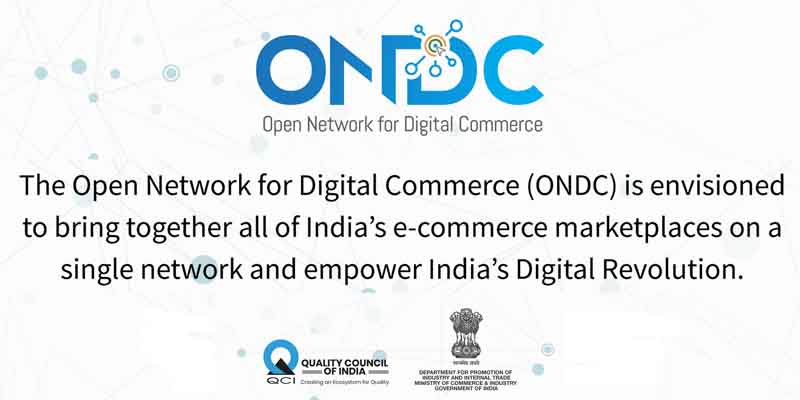- India
- Apr 30
Explainer / What is Open Network for Digital Commerce (ONDC)?
India launched the pilot phase of Open Network for Digital Commerce (ONDC), a UPI-type protocol, in five cities with an aim to democratise the fast growing e-commerce sector and help small retailers.
The initiative is also aimed at curbing the dominance of large multinational e-commerce players.
What is ONDC?
• The Department for Promotion of Industry and Internal Trade (DPIIT) has pioneered the initiative of Open Network for Digital Commerce (ONDC).
• ONDC is envisioned to bring together all of India’s e-commerce marketplaces on a single network and empower digital revolution.
• It aims at promoting open networks developed on open sourced methodology, using open specifications and open network protocols independent of any specific platform.
• These open protocols would be used for establishing public digital infrastructure in the form of open registries and open network gateways to enable exchange of information between providers and consumers.
• The initiative has an objective of reimagining digital commerce with a focus on inclusiveness.
• Today, e-commerce markets work in silos, with each e-commerce platform connecting only its own merchants and customers to each other. ONDC will integrate these closed e-commerce ecosystems and allow each player to be discoverable to a wider market.
• The network will increase value for all participants by collectively expanding the e-commerce market while retaining its competitive synergies.
• It is expected to digitise the entire value chain, standardise operations, promote inclusion of suppliers, derive efficiencies in logistics and enhance value for consumers.
• As Unified Payments Interface (UPI) is for digital payment domain, and as ‘http’ is for data communication on the World Wide Web, ONDC is intended to become the same for e-commerce in India.
• ONDC received its certificate of incorporation as a private sector non-profit company on December 31, 2021.
• A number of established companies have integrated with the platform.
• The government has already set up a nine-member advisory council, including Nandan Nilekani from Infosys and National Health Authority CEO R.S. Sharma, on steps required to design and accelerate the adoption of ONDC.
How will it benefit small retailers?
• ONDC goes beyond the current platform-centric digital commerce model where the buyer and seller have to use the same platform or application to be digitally visible and do a business transaction.
• It will enable buyers and sellers to be digitally visible and transact through an open network, no matter what platform/application they use.
• ONDC protocols would standardise operations like cataloguing, inventory management, order management and order fulfilment. Thus, small businesses would be able to use any ONDC compatible applications instead of being governed by specific platform centric policies. This will provide multiple options to small businesses to be discoverable over network and conduct business. It would also encourage easy adoption of digital means by those currently not on digital commerce networks.
• ONDC is expected to make e-Commerce more inclusive and accessible for consumers. Consumers can potentially discover any seller, product or service by using any compatible application or platform, thus increasing freedom of choice for consumers. It will enable the consumers to match demand with the nearest available supply. This would also give consumers the liberty to choose their preferred local businesses.
• During the pilot phase, the target is to onboard 150 retailers in five cities — Delhi NCR, Bengaluru, Bhopal, Shillong and Coimbatore.
• Going forward the target of the ONDC is to onboard 3 crore sellers and one crore retail merchants online.
• It would focus on apps in regional languages for both buyers and sellers to tap small merchants and rural consumers.
Manorama Yearbook app is now available on Google Play Store and iOS App Store

